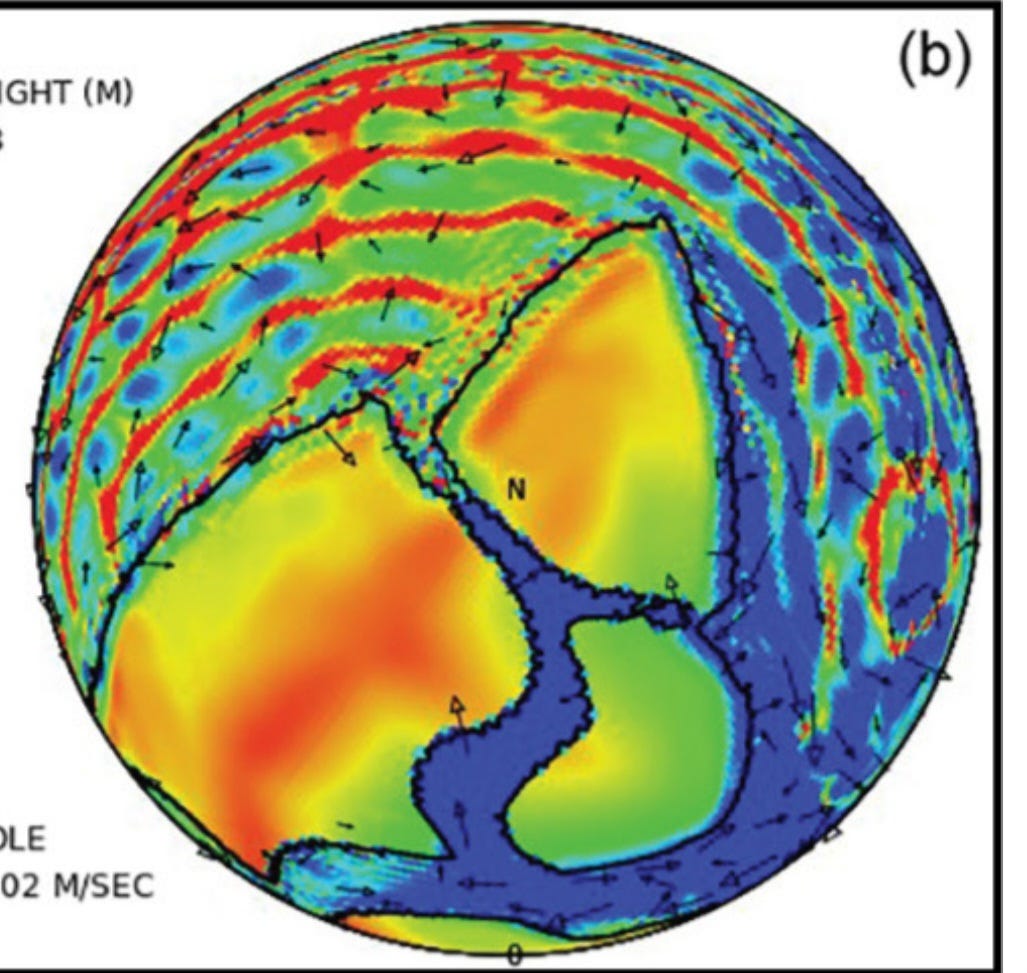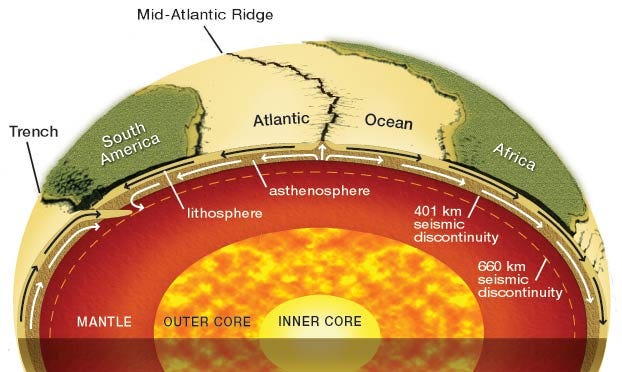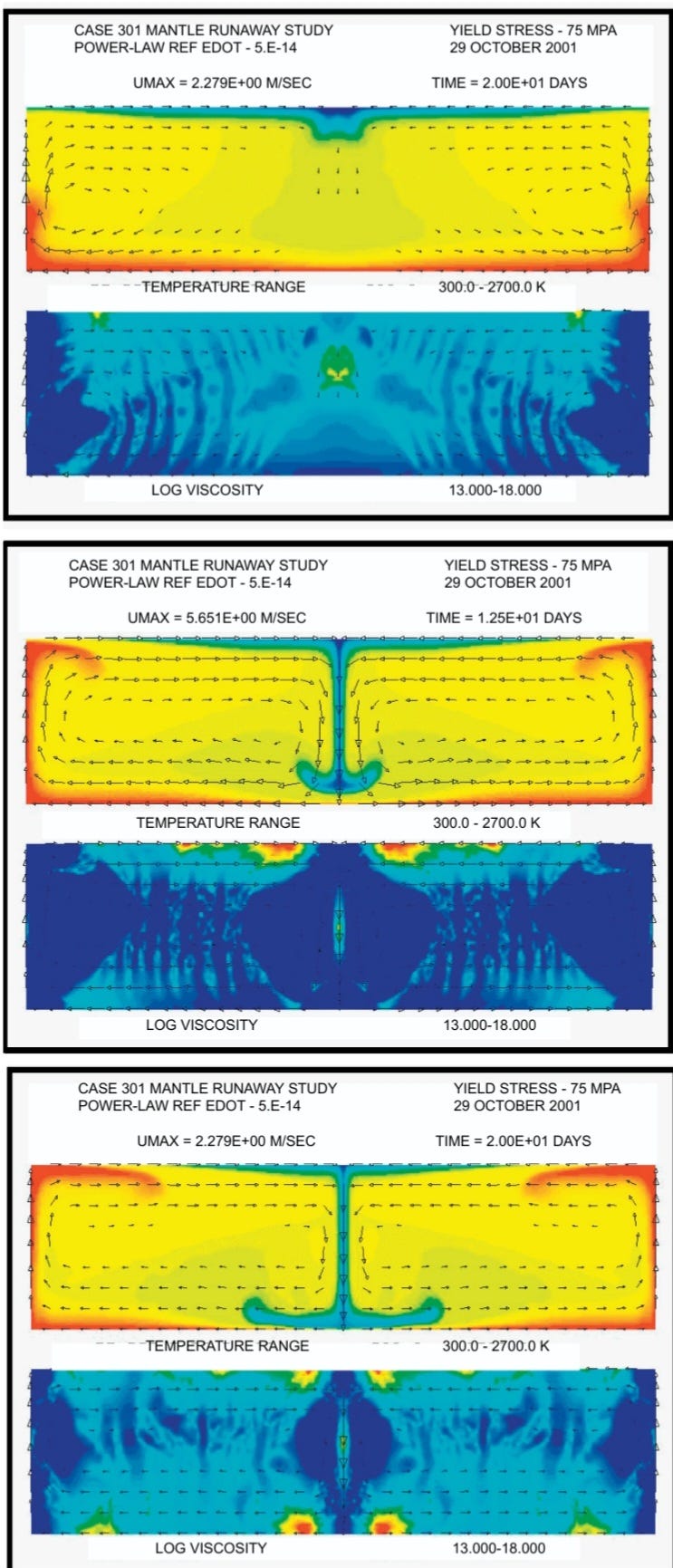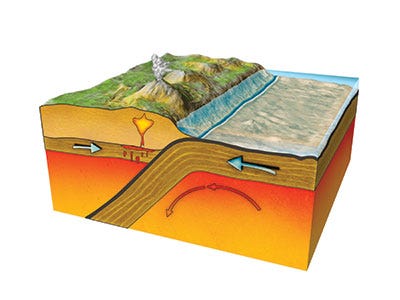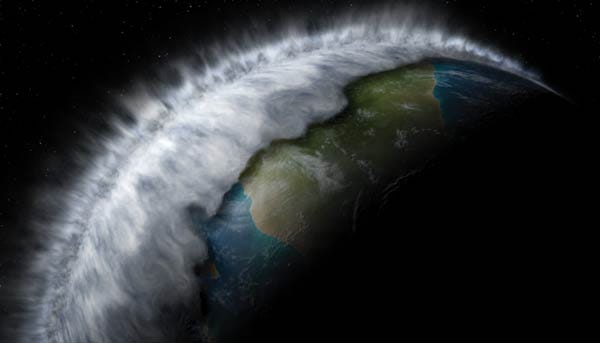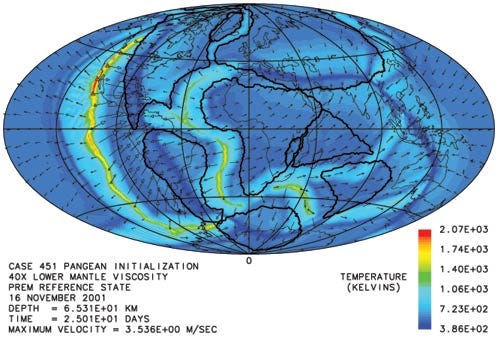JMJ
Glory to Jesus Christ, y'all! And a grace-filled Roman Feast of St. Anne, Mother of Our Lady and Grandmother of Our Lord! (We Byzantines celebrated her Dormition yesterday.) (And this author is rejoicing in having two opportunities in two days!)
Tsunamis have been in the news a lot the past couple of decades, the ubiquity of cell phone cameras enabling photo and film documentation of often horrifying overrunning of water onto a shoreline or up a river valley.
The one in Northern Japan in 2011 was even filmed from helicopter as it rampaged (in eerie slow motion as seen from high up) across the landscape, and closeup videos from higher ground of towns being overrunning and destroyed were taken. During the Indian Ocean one of 2004, there was no lack of photos and footage. In fact a likely terrified photographer on a tall hilltop by a bay filmed a poor victim who'd wandered out onto the middle of suddenly exposed muddy bay bottom (often, the water recedes before the wave hits), the victim suddenly kneeling as a huge wall of muddy water came roaring back into the bay right at him. God rest his soul and those of the many thousands who perished from these and other tsunamis! (I would've assigned this topic as homework, but it is too gruesome to spend time on. 😢😞 Time would be better spent praying for the salvation of the victims.)
Now, to oddly switch gears: when one looks at places where water runs across a solid surface with great speed, on surfaces as varied as the blades of a motorboat propeller or the bottom of a spillway of a dam, one often finds pits or even fracturing of the surface. The phenomenon seems very counterintuitive: how could nice running water do something like that? I know my shower doesn't!
The answer is CAVITATION: when swiftly running water is made to go turbulent, it is thereby forced in certain places to flash into bubbles of water vapor despite being way below its boiling point in terms of temperature. Because the temperature isn't sufficiently high to maintain those bubbles, they will collapse back into liquid form, but with a violent snap. If that snap is near a solid surface, it can pit that surface, like on the blades of a motorboat propeller, or it can even fracture that surface if brittle, like the concrete bottom of a dam's spillway. (Lots on the subject online…[cough]…homework…[cough]: of particular interest is what happened at the Oroville Dam in Northern CA in 2017.)
Now, one of the paradigms that is being used to explain the vast, very thick, and obviously rapidly-emplaced Great Flood sediments (as discussed in the Twelfth Post) is Catastrophic Plate Tectonics (CPT). This paradigm — CPT — posits that very frequent, monstrously huge tsunamis overran the largely granitic rock of the continents, their cataclysmic-level turbulence pulverizing that underlying rock into sediment, with that sediment being emplaced atop the continents in thick, areally vast, horizontal layers. The huge number of critters caught up in the turbulence became the numerous fossils that we encounter today.
(Tsunamis (red stripes on oceans) spreading out from a vibrating plate boundary. (Ref 1))
Now, what caused the tsunamis?
(Mainstream plate tectonic diagram. The plate going under South America is SUBDUCTING. The Mid-Atlantic Ridge is a place of SPREADING. (Ref 2))
The theory assumes an Earth initially set up much like mainstream plate tectonics has it set up: rigid plates, continental and oceanic, floating atop a hot, taffy-like mantle, with some of the edges of the plates dipping down (subducting) under horizontal neighboring plates, the junction being a trench like we have in many places today, and other plate boundaries being either places of spreading, like the mid-ocean ridges, or of horizontal sliding, California's San Andreas fault being an example. The whole mantle slowly rises mid-ocean and sinks at the subduction zones, dragging the plates’ edges downward. Everything moves about as quickly as the growth of a fingernail. (Homework! 😉)
(RUNAWAY MELTING: though this is a 2-dimensional representation, the idea is nevertheless validly represented. (Ref 3))
What triggered the Flood would have been RUNAWAY MELTING, a sudden catastrophically rapid overturning of the mantle because of sudden (due to heat and pressure) density changes in mineral crystals within it. This would drag down a significant length of the dipping crustal slab at the trenches at high speed…ealking pace (WAY quicker than a fingernail growing).
(Trench closeup. (Ref 4))
The friction (i.e. getting frequently stuck) between the descending solid subducting slab and the solid neighboring horizontal slab would've caused MASSIVE flapping up and down of the junction, like thousands of feet, with the seawater above being disturbed into ginormous tsunamis, racing around the globe to do their cavitation/erosion work on any continent they'd run onto. There'd be a wave generated roughly every hour.
The tsunamis, coming onshore at high speed, would've pulverized the underlying rock, especially closest to shore, into sediment by cavitation, dragged the stuff inland, and, because going uphill slows down forward speed, the sediment would’ve started settling out, the biggest amount furthest from shore, resulting in an ever-growing (with each new tsunami) mound of stuff in mid-continent. Because water sorts things in varying ways, depending on current speed, sediment proportion, etc., the sediment would end up layered in various ways and particle sizes.
(Ribbon of hot rising mantle boiling off sea water, which condenses into heavy rain. (Ref 5))
(Hypothetical cracks where hot mantle material would’ve come to the surface. (Ref 6))
Meanwhile, while stuff was sinking at the trench, hot mantle material would've been rising elsewhere to compensate, vaporizing the seawater above it, the vapor of which would've risen up into the atmosphere to condense into prolonged torrential rain. This risen hot mantle material would've solidified into new ocean floor that would keep being pushed apart sideways. In the end, after all was over, the rising portion in the middle would be what we nowadays call the mid-ocean ridges.
As the mantle was overturning, it would've been dragging the overlying tectonic plates around, splitting continental landmasses and rearranging them into the configuration we see today.
Once the whole plate/mantle overturning process stopped, the sea water that was piled onto the continents by the tsunamis would've gently run off back into the ocean basins, leaving behind the huge sediment load that it had initially violently emplaced albeit a bit eroded.
Advantages of CPT:
— provides a simple explanation;
— can fit into the short time frame that Genesis requires;
— can account for the tectonic plate boundaries (trenches, faults, etc.) as they are seen today;
— can account for the global torrential rain; and
— provides a plausible mechanism for erosion of pre-Flood land surface, plus piling up of the resulting sediments onto continents.
Disadvantages (in view of the author):
— Would God have created an Earth with an unstable mantle that could rapidly overturn?
— Genesis 7:11-12 talks about “all the fountains of the great deep were broken up, and the flood gates of heaven were opened: And the rain fell upon the earth forty days and forty nights.” (from drbo.org) This seems to indicate primarily a water event, water coming out of somewhere in vast quantities for nearly six weeks.
--Did God create the Earth in a plate tectonic configuration with trenches, etc., structures that would indicate earthquakes, volcanoes, etc. pre-Flood?
In the next post, we'll look at a different paradigm…The Hydroplate Theory (HPT).
Nostra Mater de Perpetuo Succursu, adiuva nos!
REFERENCES:
—2, 4, 5, 6: https://answersingenesis.org/geology/plate-tectonics/a-catastrophic-breakup/
— 3: https://icr.org/i/pdf/technical/Catastrophic-Plate-Tectonics-The-Physics.pdf
— 1: https://digitalcommons.cedarville.edu/cgi/viewcontent.cgi?article=1020&context=icc_proceedings



